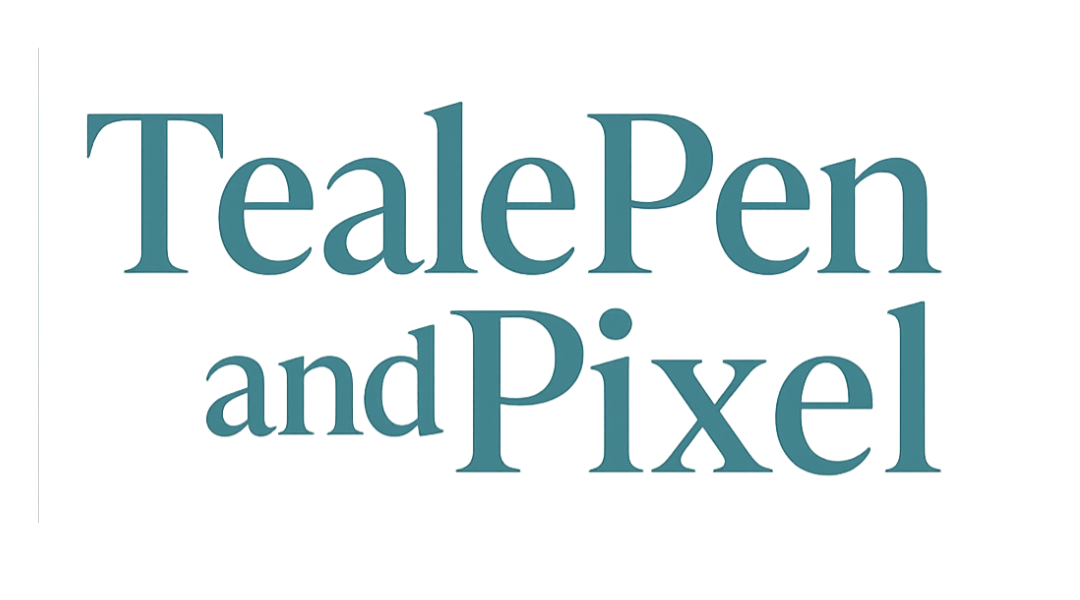Key Takeaways
To build a truly effective marketing strategy as a financial advisor, you need to think of compliance as more than just an inconvenient, legal checklist.
If you’re feeling stuck in a compliance quagmire, it doesn’t have to be that way.
In fact, with the right approach, compliance could be your gateway to a trusted, growing financial services brand – supercharging your marketing along the way.
TLDR: Here are my most actionable and useful tips for keeping your marketing safe, credible and future-proof in 2025:
- Become a regulatory master. Stay current on your rules, such as SEC (US), FCA (UK) and ASIC (Aus.). One overlooked update can trigger major penalties or audits.
- Set up a rigorous review process for all client-facing content. Each piece should be approved, documented and stored for easy audit retrieval.
- Keep comms fair and transparent, ALWAYS. Highlight both benefits and risks, use plain language and include required disclosures to build lasting credibility.
- Archive every communication channel (email, social, print and web). Find ways to automate the process. Regulators expect you to retrieve any record within minutes, not days.
- Use testimonials and performance claims responsibly. Always including clear disclosures about compensation, conflicts and both net and gross results.
- Make compliance a team effort. Use ongoing training, real-world scenario drills and open communication so every team member owns compliance – not just your compliance officer.
- Embrace technology and real-time updates. In 2025, so much is possible – automated archiving, AI-powered review platforms, an so much more.
Compliance doesn’t just protect you; it can also be your brand advantage.
Working With Compliance: The Reality
I’ve worked with financial advisors for 10 years, and compliance has been a recurring bottleneck.
I’d write four articles for an advisor (1,000+ words each), then submit these for review. It could then take weeks to get an initial once-over from the CCO.
By which point, some of the zeitgeist would have passed.
So, when we were finally able to hit publish, a lot of momentum was lost. All that potential for traffic and lead generation, gone.
And don’t get me started on the ongoing regulatory pressure.
Sometimes the advisor and I would go through the whole compliance process, only to get a slap on the wrist again – weeks later, after we did “everything right”.
Someone else in compliance had looked over the article. It now needed taking down and revising before it could be published again. All that Google indexing we’d built up?
Also gone.
It’s little wonder advisors are frustrated and live in a state of fear.
Picture this: As many as one in two advisory firms faced a compliance breach in a single year – many from a single overlooked social post or client endorsement.
If you’re a financial advisor using digital marketing or AI, you already know that the “move fast and break things” mentality can bring more than leads.
It can deliver six-figure penalties and a hard-earned reputation dent.
With all this baggage, it can be hard to view compliance positively.
However, what if I told you that it could be one of the best ways to build trust and stand out from less-disciplined competitors?
You need a process that’s fluid, practical and shields you from regulatory surprises – without smothering your marketing creativity.
In this guide, you’ll get practical, actionable tips for:
- Understanding which regulations you can’t afford to miss
- Setting up airtight review processes that adapt to your workflow
- Keeping seamless digital records for every piece of content
- Promoting compliance training and culture into your daily DNA
- Adapting to change and harnessing tools
Let’s break down how you can make compliance your firm’s trusted calling card.
Staying ahead isn’t just about avoiding fines – it’s about demonstrating integrity, protecting your business and signaling to clients that you prioritise their trust at every step.
#1 Know the Rules: Navigating Key Regulatory Guidelines
Currently building a marketing campaign for your advisory firm? Before you lay the first brick, you need to know the zoning laws.
The financial marketing world is just as strict. The rules shape everything you do.
Understanding the Key Regulatory Bodies
As a marketer and AI specialist for financial advisors, I’ve worked in quite a few regulatory environments over the last decade. Each has its own quirks and nuances.
Here are three of the key ones I’ve encountered (skip to the one most relevant to you)…
🇺🇸 In the US, three main agencies keep advisor marketing in check, each with a specific lens:
- SEC (Securities and Exchange Commission): Covers federally registered advisors; sets the gold standard (think: Rule 206(4)-1, aka the Marketing Rule).
- FINRA (Financial Industry Regulatory Authority): Oversees broker-dealers; focuses on fair client communications (see FINRA Rule 2210).
- CFPB (Consumer Financial Protection Bureau) & state regulators: Add local and consumer-centric requirements.
These regulators aren’t siloed. Sometimes, your marketing needs to comply with all of them.
Remember: “one-size-fits-all” messaging just isn’t safe.
🇬🇧 In the UK, financial marketing is overseen by a central authority with strict expectations around clarity, fairness and avoiding misleading information:
- ICO (Information Commissioner’s Office): Enforces rules around data privacy and email marketing (especially under GDPR and PECR).
- FCA (Financial Conduct Authority): Regulates all financial promotions. Requires that communications are “clear, fair and not misleading.” Particular focus on consumer duty, suitability and disclosures (see COBS and PERG guidelines).
- ASA (Advertising Standards Authority): Oversees general advertising standards, including online promotions and sponsored content.
Even blog posts and social media updates can fall under FCA scrutiny. If it influences a financial decision, it may be a “financial promotion.”
🇦🇺 Australian advisers must navigate a layered regulatory framework designed to protect consumers and uphold professional standards:
- ASIC (Australian Securities & Investments Commission): Regulates financial services firms and advisers. Oversees financial promotions under RG 234 (Advertising Financial Products and Advice Services).
- AFCA (Australian Financial Complaints Authority): While not a direct marketing regulator, AFCA decisions can reflect how misleading marketing affects disputes.
- OAIC (Office of the Australian Information Commissioner): Handles privacy, consent and email communications – especially under Australian Privacy Principles (APPs).
ASIC expects marketing to be balanced, not just persuasive. Highlight risks, not just benefits – and avoid “cherry-picking” performance.
#2 Implementing a Robust Review and Approval Process
A strong internal review process isn’t just a best practice. It’s your safety net against unexpected compliance headaches.
Every piece of marketing – from web copy to email campaigns – needs a second (and often third) set of eyes before going out.
You’re not just looking to catch typos; you’re protecting your firm from regulatory scrutiny.
The Basics: What Needs Review and Who’s Involved?
You’re about to launch a new service, so you draft a sleek landing page and schedule a social media blast. Here’s what should happen next:
- All materials get reviewed: websites, blog posts, emails, presentations, print ads, social posts – nothing gets skipped.
- Assign a reviewer: ideally, a Chief Compliance Officer (CCO) or a trusted compliance lead.
- Document every approval: initials, time/date and feedback on record.
“If it’s client-facing, it’s compliance-facing.”
Honest Content: Meeting Standards for Fairness, Accuracy and Disclosure
Creating fair and balanced marketing content isn’t optional.
It’s a non-negotiable for financial advisors aiming to build trust and stay on the right side of regulators.
Think of it this way: if your marketing message leaves out key risks or only highlights best-case scenarios, it’s like giving directions with only half the map.
The Anatomy of Fair, Balanced Advisor Messaging
“Fair and balanced” means your content must:
- Present both benefits and risks, not just the upsides
- Use language that’s clear, not misleading or exaggerated
- Back up performance figures with credible data
If your neighbor couldn’t make sense of your pitch, it probably needs a rewrite.
Must-Have Disclosures for Every Campaign
To protect both your firm and your clients, always include these important disclosures:
- Performance claims: Include context, limitations and whether results are net/gross of fees
- Testimonials/Endorsements: Clearly state if compensation or relationships exist
- Third-party ratings: Disclose who provided them and what they’re based on
- Material risks: Spell out what could go wrong
- Conflicts of interest: Reveal any ties that might sway your objectivity
An illustrative example: a social post touts your “top-rated” status. Without citing the rating agency and criteria, it can prompt regulatory headaches.
Compliant vs. Non-Compliant: What’s the Difference?
Let’s break it down with quick examples:
- Compliant: “Our model portfolio delivered 8% net of fees in 2023. Past performance does not guarantee future results.”
- Not compliant: “We get the best returns – ask our happy clients!” (Missing data, disclosures, and way too vague)
On social, always “pin” disclosures directly under performance claims or testimonials.
Use infographics, pop-up alerts or captions to ensure clarity.
Regulators expect disclosures to be unavoidable.
#3 Recordkeeping: Document Everything (and Why You’ll Thank Yourself Later)
Staying compliant as a financial advisor starts with relentless documentation.
SEC Rule 204-2 and FINRA Rule 2210 require US advisers to retain nearly every piece of their marketing footprint – think of it as a firm’s digital “paper trail insurance policy.”
Picture this: months after a successful ad campaign, a regulator calls with questions. If you can’t pull up every version, approval, and disclosure within minutes, your confidence (and your reputation) evaporate.
What Must Be Archived? (Here’s Your Quick List)
Many regulators expect you to save:
- All versions of emails and newsletters sent to clients or prospects
- Content from your websites, landing pages and calculators
- Social media posts, comments and direct messages used for business
- Print materials like brochures, ads, mailers and event invites
- Ad campaign assets from digital platforms (with associated metrics and audiences)
- Compliance approval records and sign-offs – who, when and what changed
If it helped shape a client’s impression of your services, it’s a keeper.
Unique Compliance Pitfalls on Digital Channels
Digital marketing expands your reach – but also your risk.
Every tweet, post and direct message is considered an official communication by regulators like the SEC and FINRA.
If you’re active on social, web, messaging apps or email, every channel has its own traps:
- Social media posts: Seen as “advertising” and require approved disclosures
- Private messages: Must be archived just like emails
- Unapproved platforms: Using WhatsApp or your personal phone? That’s a fast track to regulatory trouble
Staff Training: Your Best First Line of Defence
Even the best policy falls apart if your team isn’t trained up.
Set a schedule for:
- Annual digital compliance refreshers
- Real-world drills: Try “mock missteps,” like an accidental text, and review responses
- Scenario-based workshops: Roleplay tricky social interactions and responses
You’re not just keeping up with rules—you’re helping your staff spot trouble before it starts.
Real-World Consequences and Social Media Success
Non-compliance costs more than fines; it can shatter trust with clients and regulators overnight.
In one 2024 case, a large financial firm paid out $6.5 million after staff used unauthorized chat apps—every message was treated as a separate violation.
To engage confidently online:
- Respond to comments using plain, approved language
- Always include clear disclosures on testimonials and endorsements
- Archive every client message, direct or public
A compliant social campaign builds your brand as reliable and transparent.
Clear policies, smart tools and hands-on training turn digital marketing from a compliance headache into your most powerful, protected asset.
“If you wouldn’t say it on your firm’s main stage, don’t say it online.”
#4 Training
Keeping compliance front-and-center isn’t just the compliance officer’s job. It’s a team sport.
When every advisor and staff member sees compliance as part of their daily work, you’re not only avoiding regulatory headaches but also building a brand clients can truly trust.
Best Practices for Building a Compliance Culture
Don’t settle for lectures. Aim for hands-on learning and cross-team problem-solving.
Try these steps:
- Monthly micro-trainings: Offer 10-minute refreshers on emerging rules or new tech tools.
- Real-world scenario drills: Assign small teams to spot issues in sample marketing content.
- Quarterly “alignment” meetings: Gather marketing, compliance, and legal together for rapid-fire Q&A.
- Compliance champions: Appoint “go-to” people in each team to answer quick questions and share best practices.
“Compliance is everyone’s job, not a silo. Teams that align here move faster and take fewer risks.”
Turning Compliance Into Competitive Advantage
A well-trained, compliance-first culture doesn’t have to gravitate towards fear.
It’s your best shield and your runway for real growth.
For example, advisors who track and share policy updates see 32% fewer marketing incidents and build even deeper client trust.
Make Compliance Habitual – Not a Hassle
Your clients notice when you do the right thing. So should your team.
Treat compliance as a living part of your brand identity, with daily action and shared responsibility.
You’ll find that protecting your firm gets easier, collaboration grows, and everyone wins.
#5 Staying Ahead: Adapting to Change and Harnessing Tools
Practical Steps to Stay Up to Date
Think of compliance like software. It updates often.
Give yourself a safety net by:
- Subscribing to regulatory updates from SEC, FINRA and other relevant agencies
- Setting calendar reminders for monthly webinar attendance on industry changes
- Joining LinkedIn groups or compliance roundtables with peers who share latest “in-the-trenches” lessons
The reality? You can’t afford to be the last to know.
Harnessing Modern Compliance Technology
Manual reviews alone just can’t keep up anymore.
“Automation won’t make you bulletproof, but it will save you from the most common mistakes.”
Tech-savvy firms are embracing:
- AI-powered review platforms for flagging risky language and missing disclosures
- Workflow tools that track approval status and amend documentation
- Automated alert systems that ping you when a reg changes or your content needs review
Picture this: with digital archiving and instant pre-review, your social posts can go from concept to compliance in hours, not weeks.
Ongoing Audits and the Long-Term Value Game
The best way to spot hidden risks? Schedule regular internal audits and run “fire drills” for the occasional mock spot-check.
Many advisors use:
- Quarterly content readiness reviews
- Random audits of email and social archives
- Shared dashboards for compliance status visibility
A culture of proactive compliance doesn’t just reduce risk. It shows clients you run a future-proof firm.
Regulatory certainty is an illusion, but adaptability is your competitive edge.
“When you make compliance a living, breathing part of your workflow, staying ahead just becomes second nature.”
Staying sharp with the right tools (and the right habits) means you’re not just reacting, but thriving, no matter what the regulators throw your way.
Conclusion
Building a compliance-focused marketing strategy is more than just checking boxes.
It’s your blueprint for long-term trust, client loyalty and solid growth in a changing landscape.
By embracing compliance as a core element of your brand, you transform every campaign into an opportunity to lead with transparency and earn lasting credibility.
Success in advisor marketing belongs to those who turn best practices into daily habits.
The advisors who thrive aren’t just rule followers. They’re reputation builders and advocates for their clients’ confidence.
—
Your Essential Takeaways
- Prioritise honest, clear disclosures in every client-facing message.
- Implement a digital review and approval process to streamline your workflow and document every step.
- Archive all communications and approvals (treat documentation as your safety net, not a burden).
- Train your team regularly so compliance instincts become second nature, not a background task.
- Stay proactive with regulatory updates and lean into new technology to keep your edge sharp.
—
Immediate Next Steps
- Audit your current marketing materials for accurate disclosures and up-to-date compliance.
- Centralize your documentation using secure, searchable digital tools. Make it easy to find what regulators want.
- Schedule your next team training session and introduce hands-on drills for real-world learning.
- Subscribe to regulatory alerts and react to changes before your competitors do.
—
Interested to Find out Where you Could Improve Your Growth Prospects as a Financial Advisor?
Click the image below to take my free scorecard.
This highlights your strengths and weaknesses in your adviser growth strategy, giving you some actionable steps to improve.

Disclaimer:
The information in this article is provided for general informational and marketing guidance purposes only and does not constitute legal or compliance advice. While I work closely with financial advisers to help them navigate regulatory considerations in their marketing, I am not a licensed legal or compliance professional. You should always consult your licensee, compliance officer, or legal adviser before acting on any advice relating to regulatory matters or client communications.
Philip Teale is a MCIM marketer with over 10 years’ experience working with financial advisors – helping them gain new revenue and clients using online channels and AI-powered workflows.

